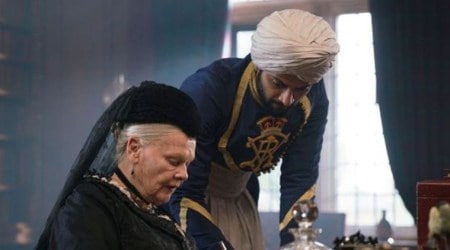 Come on and let it show: The medieval St Mark’s Church with its roof of colourful tiles. (Photo: Lakshmi Sharath)
Come on and let it show: The medieval St Mark’s Church with its roof of colourful tiles. (Photo: Lakshmi Sharath)
“Rub his nose and you can meet your heartthrob,” says my guide Hela, pointing to a statue of the poet and writer, Antun Gustav Matos, sitting on a bench in Zagreb. The Croatian capital is filled with statues of writers and scientists, besides kings and queens, but the shiny statue of the author is apparently one of the most photographed among them all. “It is just a local legend,” she says with a laugh, when I ask her if she has rubbed his nose as well.
Walking around Croatia’s largest city, I realise that every stone in Zagreb has a romantic legend ascribed to it and there are several charming stories everywhere. My eyes are drawn to a tiny shop filled with handmade souvenirs and all I can see are pretty wooden hearts carved in red adorning the store. “It is the Licitar, the symbol of the city,” says Hela, as she explains that they were associated with a ballet titled Licitarsko srce or The Gingerbread Heart, composed by a renowned Croatian composer. “They were tokens of love given by a boy to his dance partner,” she says. It’s a tradition that goes back to medieval times. The Licitar hearts, as they are referred to, are actually gingerbread cakes or biscuits made with flour, honey, eggs and other ingredients and are given as gifts during weddings and occasions. Today, they are decorated with tiny pieces of mirrors with a little bit of icing and they have a hidden romantic message as well.
Cosy and quaint, this town, known for its beating hearts and kissing spots, unique churches and romantic cathedrals, is divided into two parts — the Upper and the Lower towns. While the latter, known as Donji Grad, is filled with lush parks and stately Baroque monuments of the Austrian Hungarian Empire, it is the Upper Town or the Gornji Grad that fascinates me. A pretty little funicular takes you up there in just a minute, but a flight of steps hidden behind stone houses can lead you there as well. The town is straight out of the medieval era, filled with cobbled streets, dotted with gas street lamps and romantic churches.
I stand mesmerised in front of the 13th century St Mark’s Church, pristine white in colour and topped with colourful ceramic tiles, that represent the Zagreb coat of arms besides the flags of the Triune Kingdom of Croatia, Slavania and Dalmatia.
The change of the royal guards happens in this square every weekend and that’s where I learn about another symbol of Zagreb and Croatia — the “cravat” or the necktie. As the soldiers march along, looking dapper with their cravats, I am told that it was initially worn by the military in the 17th century. The story goes that the French were curious about the way the Croats wore these picturesque scarfs, in particular about the way they were knotted around their necks. The scarves were actually parting gifts from the girlfriends who sent their men to war and it was the women who tied these love knots around the necks of the soldiers. This eventually became a fashionable trend. In fact, the Croats are so proud of the cravats that they even celebrate a National Cravat Day every year on October 18.
 Croatian souvenirs. (Photo: Lakshmi Sharath)
Croatian souvenirs. (Photo: Lakshmi Sharath)
We walk around, exploring the beautiful St Catherine Church next. Hela adds, with a giggle, that the cathedral overlooks plenty of “kissing spots”. I am not at all surprised. Everything about Zagreb speaks of romance, except for one monument, which, tragically, stands for heartbreak — the Museum of Broken Relationships.
When a couple broke up after four years of being together, they decided to create a museum filled with personal objects that stood for their failed love. So, in 2011, Croatia’s first private museum came up, that spoke of heart-wrenching tales of lost love. The Museum of Broken Relationships is about stories of betrayal, doomed relationships and unrequited love. Every tale is woven around an object that stands as a metaphor for loss — a glove, a scarf, a toy, an axe, a letter.
However, Zagreb quickly mends broken hearts with its old-fashioned charm. I wander around the colourful markets and the vibrant cafes aimlessly, until Hela calls out to me. And that is when I see another beautiful love story etched on the walls. Lying amidst the stones is a touching memorial for a dog, Pluto. The story goes that Pluto, a stray dog, had loyally guarded the construction site of the first Croatian Savings Bank from smugglers, but was eventually killed. The workers, in particular the architect, who had forged a bond with the canine, decided to show their love by building a small memorial to their faithful companion.
Standing there, I finally realise why Zagreb is called the city of love. A town with just 8,00,000 people, the Croatian capital is unlike any of its European counterparts. Cosy and quaint, its heart beats for lovers, friends and even for those whom love has betrayed. No wonder then, that the souvenir that most captures the spirit of the city is a bleeding heart.
Lakshmi Sharath is a Bangalore-based travel writer.

